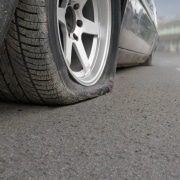Tips For Avoiding Driving Fatigue
The transportation industry relies on truckers getting to their destination as soon as possible, so it’s important to haveroadside assistance in Beaver Dam, KY, on speed dial. But each year, truck accidents and injuries can be traced back to driver fatigue. While the pressure is on to drive longer hours, it’s important for you, other drivers on the road, and, of course, the equipment and shipment to stay safe. One of the most important things you can do is to avoid driver fatigue.
Learn to Recognize the Signs
By now, you’re almost certainly aware of the signs of you falling asleep. As soon as you notice things like your eyelids feeling heavy, your mind drifting off, or your actual truck drifting out of your lane, head to the nearest safest way station.
Don’t Make Random Goals
When you’re feeling weary, don’t make up random driving goals, like:
driving just 10 more miles
driving until a certain time, like 15 more minutes
driving to a place with food
The point is to get off the road as soon as possible, even if you’re only an hour away from your destination. Because if you don’t you may never reach your destination.
Drive in Daylight as Much as Possible
Your body’s circadian rhythm is designed to support the release of melatonin when it gets dark outside to help you fall asleep. As much as possible, rise early in the morning and get on the road, and then stop driving as soon as possible when it gets dark outside. This strategy alone will do wonders to help you to avoid feeling driver fatigue.
Get Quality Sleep
When you do sleep, strive to ensure it’s restful. Ensure you get 7-9 hours of quality sleep per night. Try to maintain a consistent sleep schedule, even on your days off. Use earplugs and a sleep mask if necessary to block out noise and light.
When you’re on the road and need services orroadside assistance in Beaver Dam, KY, rely on Ohio County Truck & Trailer Repair. Contact us today to learn more.




